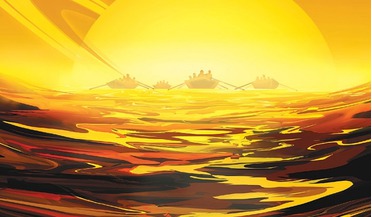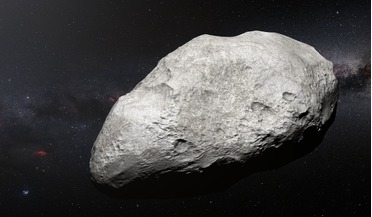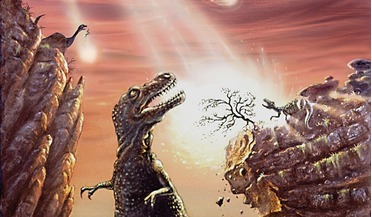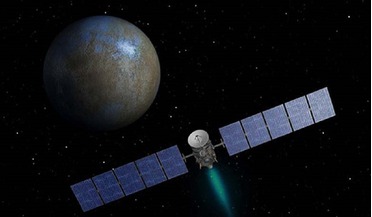 March 2016
Searching for water in the Solar System
March 2016
Searching for water in the Solar System
...five million years following the beginning of the Solar System and accreted with dry asteroids already in place in the asteroid belt. In both scenarios we do not know the abundance of transported volatiles; it is difficult to constrain because follow...
 09 May 2018
First confirmed carbon-rich asteroid found in Kuiper Belt
09 May 2018
First confirmed carbon-rich asteroid found in Kuiper Belt
... is one such body and it likely started life in the asteroid belt between Mars and Jupiter. Carbonaceous or C-type asteroids are the most common type of asteroid – Bennu, the target asteroid for NASA’s OSIRIS-REx mission is one, but like...
 August 2017
Big science from small spacecraft
August 2017
Big science from small spacecraft
... the Sun, contains 0.7-1.7 million objects with a diameter of greater than 1 km. Thus far, spacecraft passing through the asteroid belt en route to the outer planets have given us a closer glimpse of only a few; and NASA’s Dawn mission has...
 April 2018
Developing Mars
April 2018
Developing Mars
..., A., Brasser, R., Sionson, B., & Levison, H. F. (2012). An Archaean heavy bombardment from a destabilized extension of the asteroid belt. Nature, 485(7396), 78. 5 Brasser, R., & Mojzsis, S. J. (2017). A colossal impact enriched Mars’ mantle with...
 February 2016
Is Jupiter Really Our Protective Shield?
February 2016
Is Jupiter Really Our Protective Shield?
... by multiple amateur astronomers. Time reported, ‘Jupiter’s extra-strong gravitational pull and its location near the asteroid belt means it’s suffered its fair share of impacts - several similar ones, by objects estimated at 10 m across, have been...
 13 March 2015
Ceres breakthrough: NASA's Dawn is first probe to visit a dwarf planet
13 March 2015
Ceres breakthrough: NASA's Dawn is first probe to visit a dwarf planet
... (950 kilometers) wide is the largest object in the main asteroid belt beyond Mars and Jupiter. This is not Dawn's first rodeo...maintained for 4.6 billion years out in the middle of the asteroid belt. That will probably give us a little courage to go ...